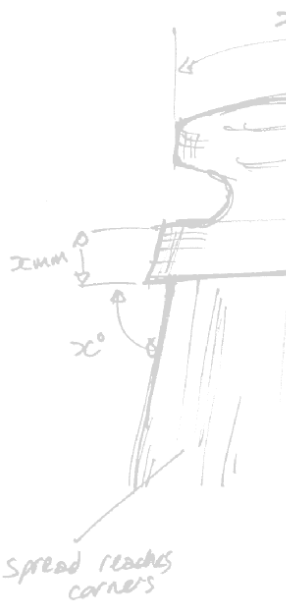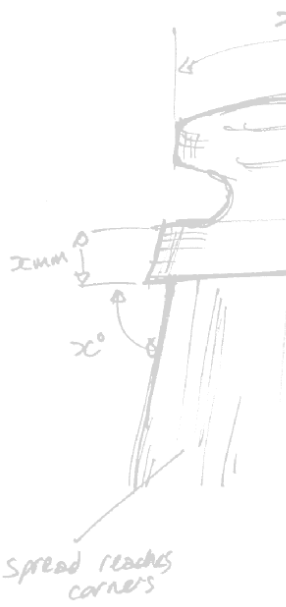The majority of brushes manufactured worldwide are Punch Filled or Staple Set. This means that holes are drilled in the brush back and then tufts of material are doubled over and ‘punched’ into these holes with a round steel wire staple securing them.
A few hand brushes are purely Resin-Set (not Punch Filled as well). The recess in the brush back is very deep and the plastic monofilaments (which are usually crimped to ensure a secure fixing) are held in purely by the resin that fills this recess in the brush back.
We have developed a unique twin approach to retaining tufts by both Staple and Resin within our hygiene brush range. The tuft is first ‘punched’ into the brush back with a stainless steel staple, then Epoxy resin is floated into a recess on the face of the brush. The resin permeates the bottom of the hole, covering the filaments and the staples as it goes. This minimises the risk of the filament pulling out and inhibits the accumulation of dirt or moisture in the tuft holes.

Pitch setting is no longer used as a method of brush manufacture by Hillbrush, but was used for many years. The brush backs are pre-bored and the fibres are cut to the required exposure length (plus the depth of the hole in the brush back). A small bundle of fibres (sufficient for one tuft) is dipped into melted pitch and then a thrum (a fine piece of twine) is wrapped around. The tuft is dipped once more into the melted pitch before being pushed into the tuft hole. As the tuft is pushed in, it is twisted, which spreads the fibres. This method of manufacture is mainly used for brushes with tufts in excess of 7mm diameter.
Brushes with very small tufts are often 'Bar Anchor Filled'. The holes in the plastic brush back are usually pre-moulded. Tufts of material are then doubled over and retained in the holes by a flat wire (or bar) that is slightly longer than the diameter of the hole. As the flat wire does not penetrate beneath the base of the hole this method of manufacture allows for much thinner brush backs to be used.
Wire drawing is not used as a method of brush manufacture by Hillbrush, but is still used for small quantity production and for some very high quality brushes. With wire drawing, the brush back is in two halves.
The front part, into which the tufts are filled, has the tuft holes pre-bored with much smaller diameter holes right through the back of the stock. A continuous strand of wire then threads up through one tuft hole, around the tuft (which is pulled into the hole) back down the hole and onto the next tuft. When all of the tuft holes have been filled, the wire is tied off and often, glue is spread across the brush back (over the wire), so that if the wire broke, not all of the tufts would come out. Finally, the back part of the stock is screwed onto the front part (with the tufts in) to cover the wires.
